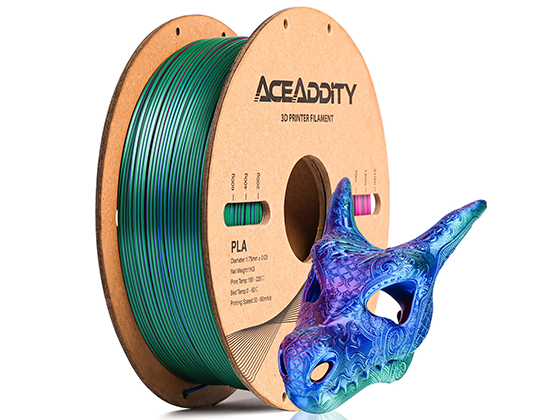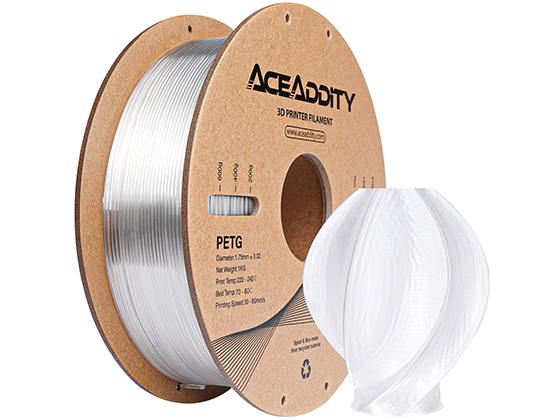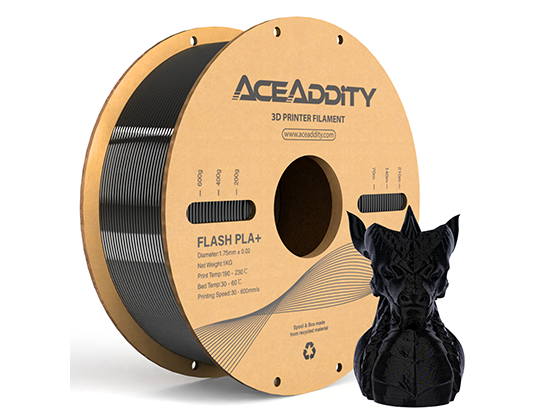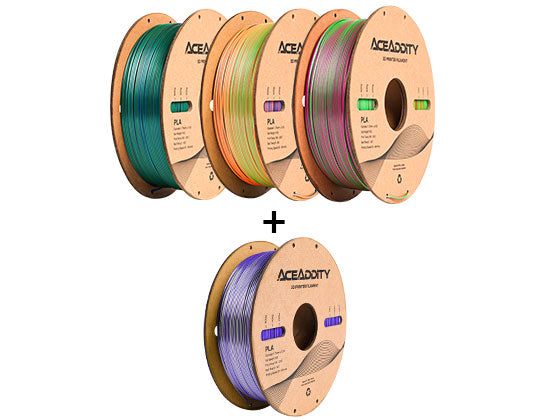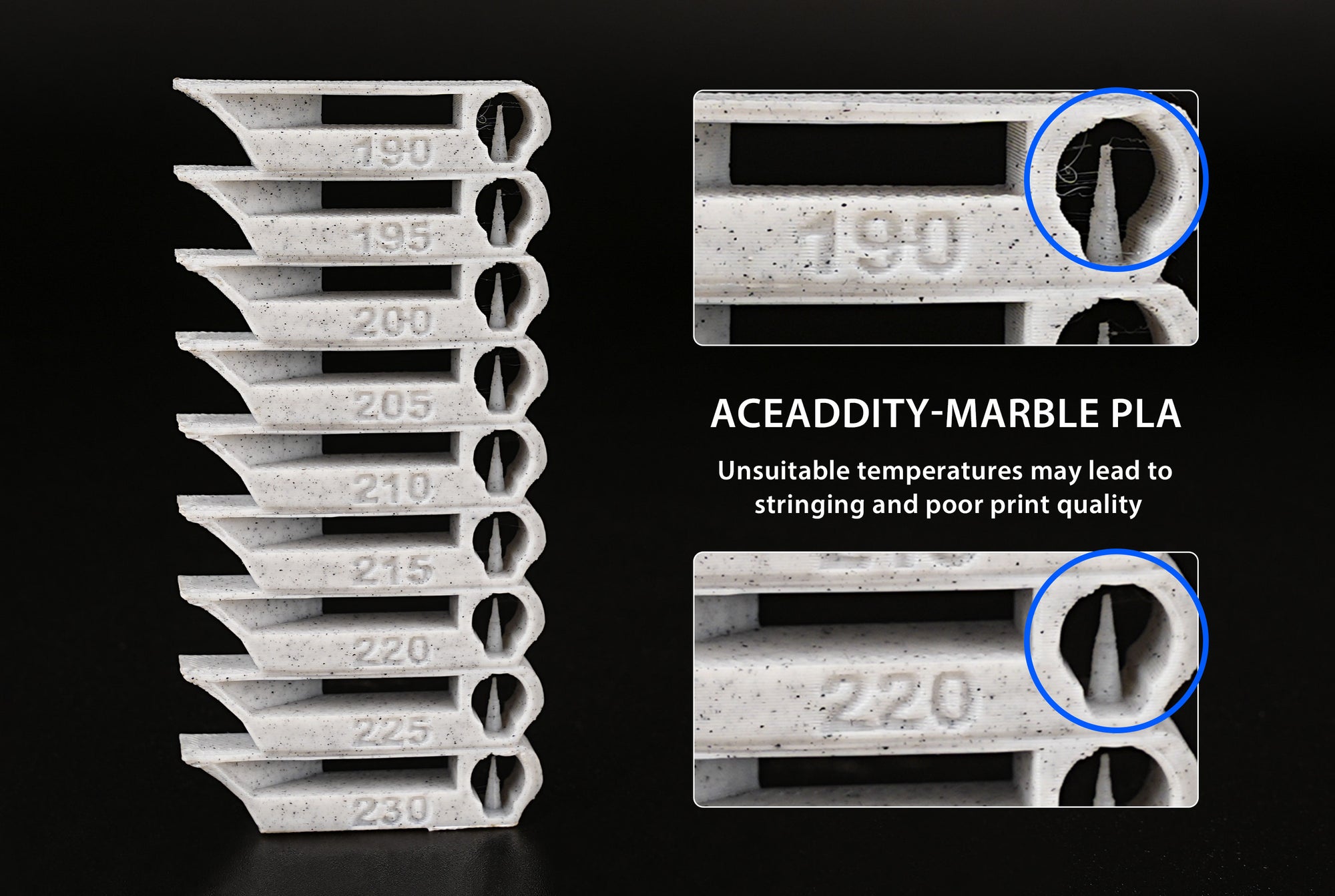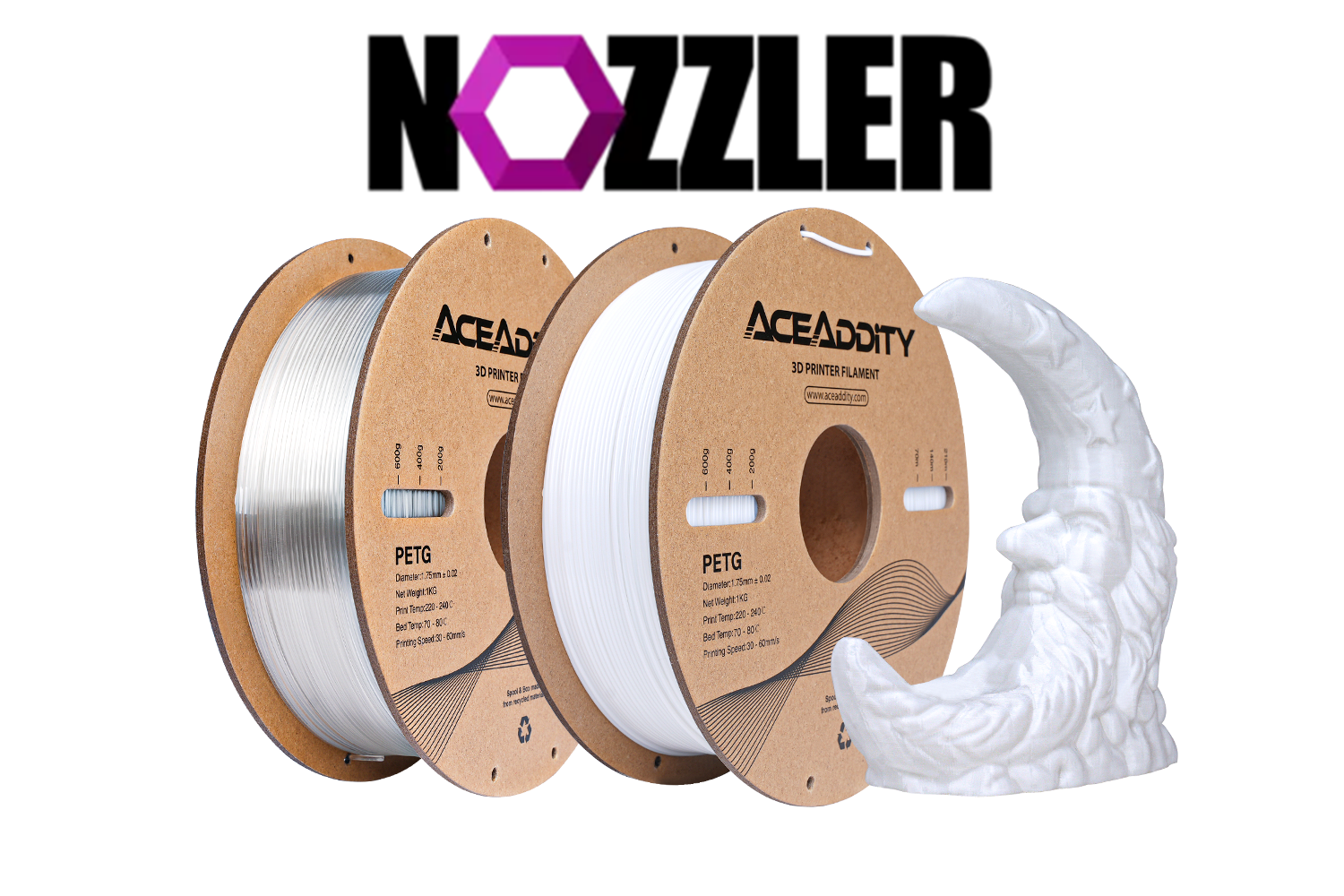1. PLA (Polylactic Acid)

Properties:
- Ease of Use: PLA is one of the most user-friendly filaments, making it ideal for beginners.
- Biodegradability: Made from renewable resources like corn starch, PLA is environmentally friendly.
- Printing Temperature: Typically between 180-220°C.
- Strength and Durability: Moderate strength with low flexibility.
Applications:
- Prototyping: Great for creating models and prototypes.
- Educational Purposes: Ideal for classroom settings due to its ease of use and non-toxic nature.
- Decorative Items: Suitable for printing objects that don’t require high mechanical strength.
2. ABS (Acrylonitrile Butadiene Styrene)
Properties:
- Strength and Durability: Higher impact resistance and strength compared to PLA.
- Heat Resistance: Can withstand higher temperatures.
- Printing Temperature: Typically between 210-250°C.
- Warping: Prone to warping, requiring a heated bed and enclosed print area.
Applications:
- Functional Parts: Ideal for creating durable and heat-resistant parts.
- Automotive Components: Used in making car parts due to its strength and heat resistance.
- Household Items: Suitable for items that need to withstand wear and tear.
3. PETG (Polyethylene Terephthalate Glycol)

Properties:
- Strength and Flexibility: Combines the strength of ABS with the ease of use of PLA.
- Chemical Resistance: Resistant to chemicals and moisture.
- Printing Temperature: Typically between 220-250°C.
- Clarity: Offers a clear finish, making it suitable for transparent prints.
Applications:
- Food Containers: Safe for contact with food and beverages.
- Mechanical Parts: Ideal for creating parts that require both strength and flexibility.
- Outdoor Applications: Resistant to moisture and UV rays, making it suitable for outdoor use.
4. TPU (Thermoplastic Polyurethane)

Properties:
- Flexibility: Highly flexible and elastic, akin to rubber.
- Durability: High resistance to abrasion and impact.
- Printing Temperature: Typically between 220-250°C.
- Adhesion: Good layer adhesion, reducing the risk of delamination.
Applications:
- Wearable Items: Ideal for creating flexible items like phone cases and watch bands.
- Gaskets and Seals: Suitable for making seals and gaskets due to its flexibility and durability.
- Footwear: Used in printing shoe soles and other flexible parts.
5. Nylon
Properties:
- Strength and Durability: High tensile strength and excellent durability.
- Flexibility: Offers a good balance of strength and flexibility.
- Printing Temperature: Typically between 240-270°C.
- Moisture Absorption: Prone to absorbing moisture, requiring careful storage.
Applications:
- Mechanical Components: Suitable for gears, bearings, and other mechanical parts.
- Tools: Ideal for printing durable and flexible tools.
- Functional Prototypes: Used for creating functional prototypes that require high strength.
6. PVA (Polyvinyl Alcohol)

Properties:
- Water-Soluble: Dissolves in water, making it ideal for support structures.
- Ease of Use: Easy to print with when paired with other filaments.
- Printing Temperature: Typically between 180-220°C.
- Storage: Needs to be stored in a dry environment to prevent degradation.
Applications:
- Support Material: Primarily used as a support material for complex prints with overhangs and intricate details.
- Dissolvable Molds: Suitable for creating molds that can be easily dissolved.
7. Wood-Filled Filament

Properties:
- Aesthetic Appeal: Contains wood fibers, giving prints a wood-like appearance and texture.
- Printing Temperature: Typically between 190-220°C.
- Post-Processing: Can be sanded and stained like real wood.
Applications:
- Decorative Items: Ideal for printing decorative items and art pieces.
- Furniture Prototypes: Used for creating furniture prototypes and other wooden objects.
- Cosmetic Prototypes: Suitable for objects that require a natural wood finish.
8. Metal-Filled Filament
Properties:
- Weight and Finish: Contains metal particles, giving prints a metallic weight and finish.
- Printing Temperature: Typically between 190-220°C, depending on the metal content.
- Post-Processing: Can be polished and buffed for a shiny metallic finish.
Applications:
- Jewelry: Ideal for printing jewelry and other decorative metal items.
- Miniatures: Suitable for creating detailed miniatures with a metallic appearance.
- Functional Parts: Can be used for parts that require a metallic look and feel.
Conclusion
Choosing the right filament depends on the specific needs of your project, including strength, flexibility, durability, and aesthetic appeal. By understanding the properties and applications of each type of filament, you can make informed decisions that enhance the quality and functionality of your 3D prints. At AceAddity, we are committed to providing high-quality filaments to meet diverse printing needs, helping you achieve the best results in your 3D printing endeavors.
Feel free to join our community on Discord to share your experiences, ask questions, and get tips on using our products. Happy printing!


